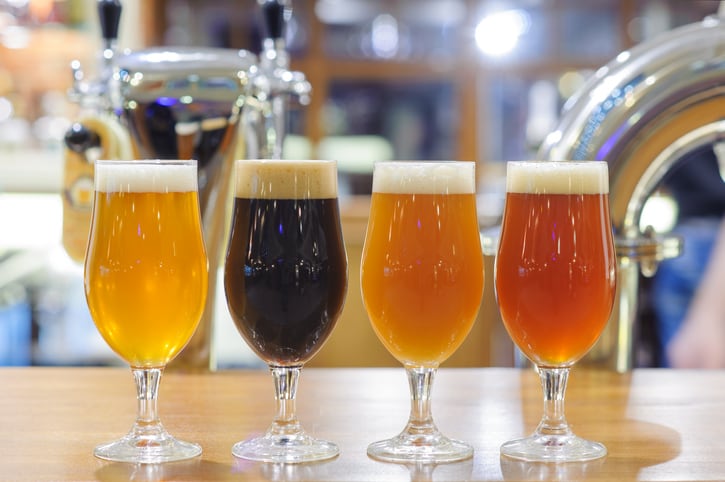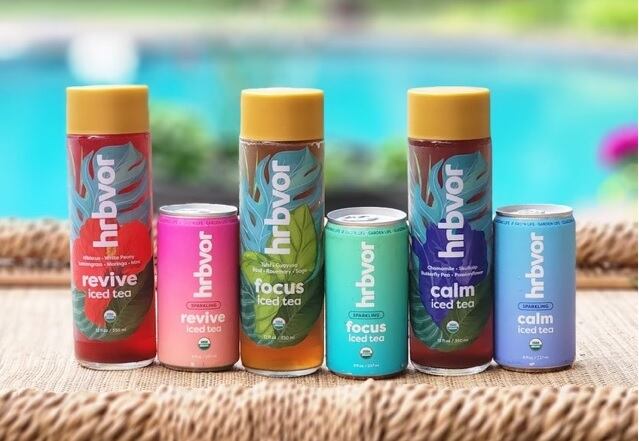Raising the threshold for alcohol-free to 0.5% ABV could encourage development of more low/no alcohol products, says the UK government. It would also bring the definition in line with other countries around the world including the US, Denmark, Germany, Australia, Sweden, Portugal, and Belgium.
However, it's not the first time the question has been under debate - a 2018 consultation failed to find adequate support to change the threshold.
Boosting low/no products
The multi-billion-pound alcohol-free drinks market has increased rapidly in recent years: predominantly driven by alcohol-free beer. However, a fifth of adults in England still drink above the low-risk guidelines of 14 units per week.
“A higher threshold could see more no and low-alcohol products on the market – increasing availability in retail and hospitality and expanding product ranges, giving consumers more options,” says the government.
In the UK, 'Low alcohol' refers to any product 1.2% ABV or below. Currently, alcohol-free is 0.05% ABV but the government is seeking views on whether to raise this to 0.5% ABV.
“This could encourage thousands more people to choose an alcohol-free or low alcohol drink to make healthier choices, moderate alcohol intake, and normalise alternatives to alcohol.
“The potential changes could drive the productivity of businesses, help remove red tape, and allow them to more easily manufacture these drinks to benefit from the multi-billion-pound alcohol-free drinks market.”
Stimulating innovation
Emma McClarkin OBE, CEO of the British Beer and Pub Association said she welcomes proposals to align low alcohol descriptors with those of ‘nearly all other global markets’.
“The BBPA has been calling on Government to review low alcohol descriptors for many years. This will create a fairer trading environment for British brewers and pub operators, stimulate innovation and growth in the low and no alcohol category and provide much needed clarity for British consumers.
“Labelling of low alcohol drinks must be relevant and clear, and not risk confusing consumers.
“British brewers are leading the charge in the development of low and no alcohol beer, with over 85% of pubs already offering at least one alcohol free beer.”
Marcos Salazar, CEO of the Adult Non-Alcoholic Beverage Association (ANBA) said: “As the no and low-alcohol category continues to grow and provide greater choice for consumers looking to reduce their alcohol consumption, it is essential that there is consistency between the UK, European, and other international markets in terms of labelling.
“The ANBA welcomes the Department of Health and Social Care’s decision to launch this consultation today, and will continue to work closely with the government to help support its aims of increasing the availability of alcohol-free products for consumers.”
In 2018 the government consulted on whether to maintain the descriptor ‘alcohol-free’ at 0.05%.
It found that 59% of consultation respondents were in favor of maintaining 0.05%: and decided to keep the alcohol-free definition at this level - although pledged to keep the area under review.
Summing up the reasons for maintaining 0.05% in 2018, it noted that the industry had successfully shown it could produce quality products which came in under this threshold.
It also said it was ‘mindful that permitting products of up to 0.5% to be described as ‘alcohol-free’ may have negative consequences for some consumers… ‘For example, there are some religions where drinking of alcohol is forbidden, pregnant women need to know if the products they are using are safe to consume and not harmful, recovering alcoholics may need to avoid alcohol where it could become a gateway to drinking dependency, and drivers need a clear understanding that what they are drinking provides a safe limit.’
Some brewers argue that a level of 0.5% is akin to many food that contain small amounts of alcohol; while others say that accepting any level of alcohol is 'a bit like giving a vegetarian a salad with some thinly cut ham'.
'Any attempt to loosen legislation is not for the benefit of consumers'
But - as the 2018 consultation showed - not everyone is in support.
“For various reasons people who do not want alcohol in their chosen drink actively seek an alcohol-free product which is less than 0.05%," Derek Jones, CEO of St Peter’s Group, a Suffolk brewery, told us.
"Those who are looking to minimise the amount of alcohol in a beverage tend to look for products in the low alcohol product category: 0.5%.
"We continue to support the ease of navigation for consumers when specifically looking for alcohol-free beverages which necessarily is below 0.05%. Therefore, our standpoint remains unchanged since 2018. Any attempt to loosen this legislation is, in our opinion, not for the benefit of consumers.”
To keep health risks from alcohol consumption to a minimum, the UK chief medical officers’ low risk drinking guidelines recommend:
- not to drink more than 14 units of alcohol a week on a regular basis (equivalent to roughly 6 pints of average-strength (4% ABV) beer or 6 medium (175ml) glasses of standard-strength (13% ABV) wine)
- to spread drinking over 3 or more days if you regularly drink as much as 14 units a week
- to limit the amount of alcohol on any single occasion
- women should not drink alcohol at all if pregnant or think they could become pregnant
As the low/no category continues to grow, there's increasing attention on ensuring products are clearly targeted at adults as an alternative to alcohol: rather than becoming a 'gateway' into the category.
The government emphasises that low/no products should not be marketed to children or consumed by them.
“Through the consultation, the government is seeking views on measures it can take with industry to prevent children and young people from accessing and consuming these products, including potential age restriction warnings on products.”
Scotland has already aired the idea that alcohol marketing rules should apply equally to alcohol brands' non-alcoholic counterparts, fearing that non-alcoholic versions simply act as a marketing tool for the brand.
Views are also being sought on whether to update labelling guidelines, so that manufacturers display the alcohol percentage on any no or low- alcohol product clearly on the bottle.
"We welcome submissions from individuals and organisations, including those involved in the manufacturing and retail of NoLo products, enforcement and public health," says the government.
The policy on low-alcohol descriptors in the UK is a devolved matter. However, the consultation notes: "While the Office for Health Improvement and Disparities (OHID) is leading this consultation in England, we would welcome evidence from across the UK."
The consultation, which closes on November 23, can be found here.




